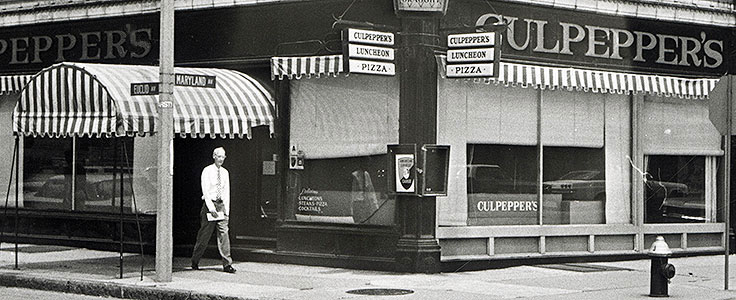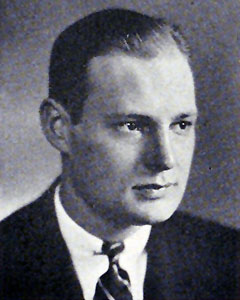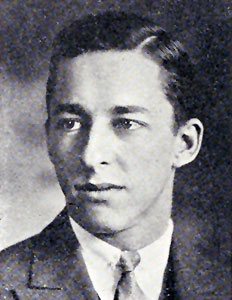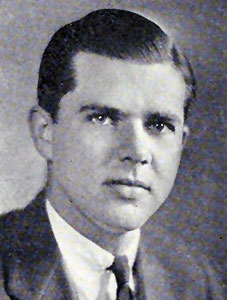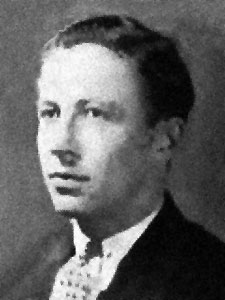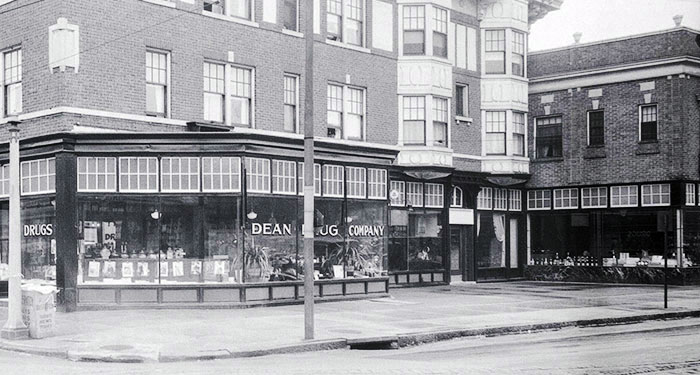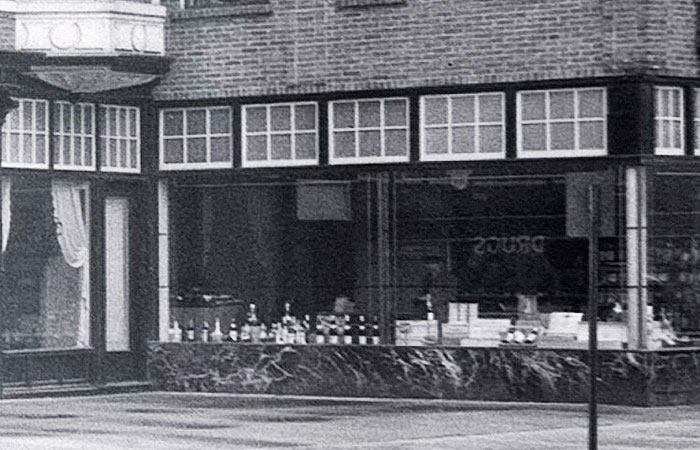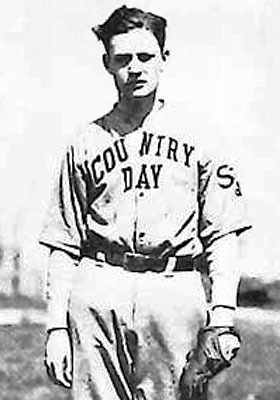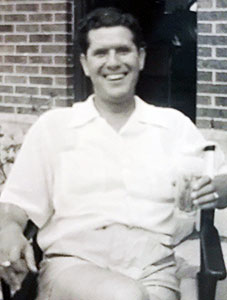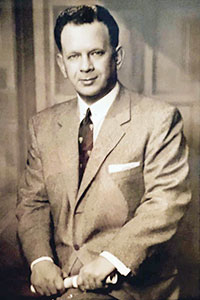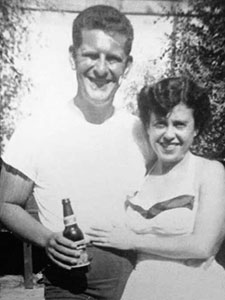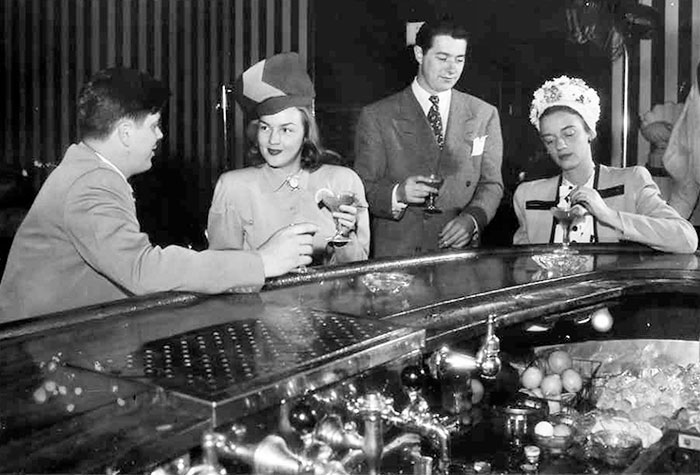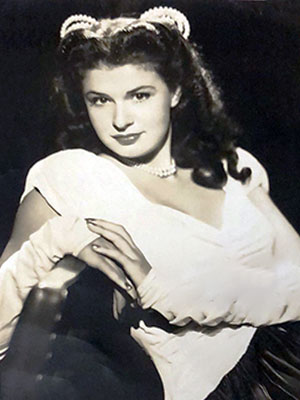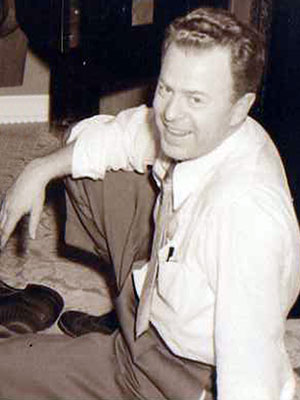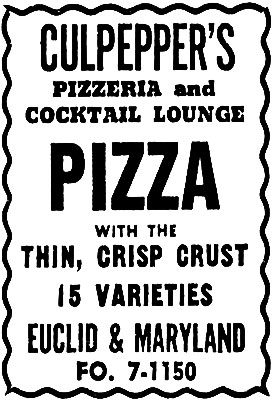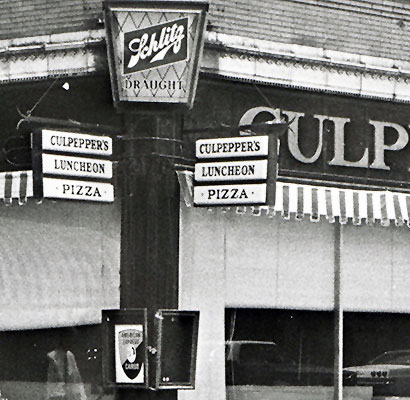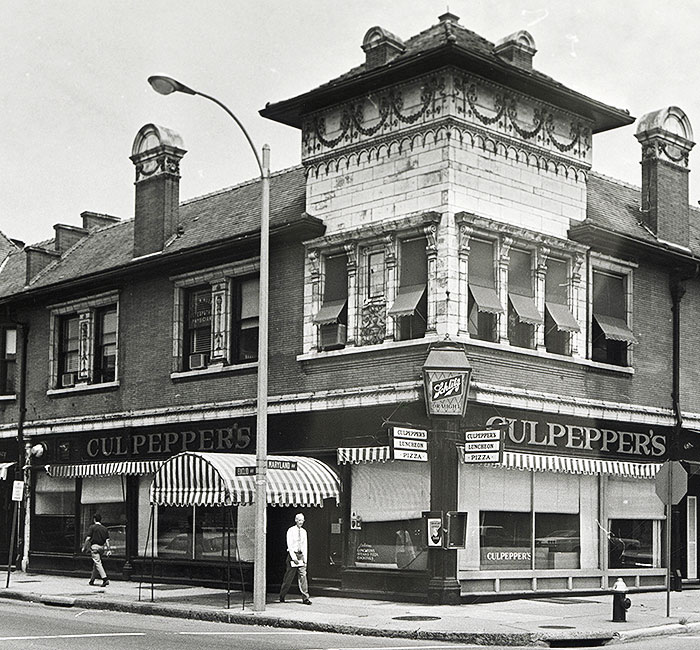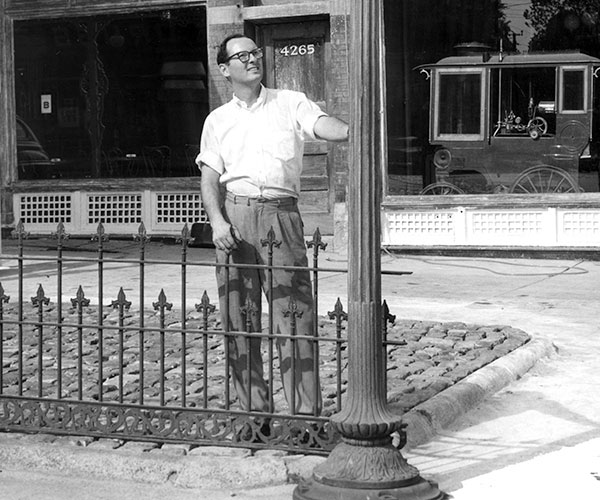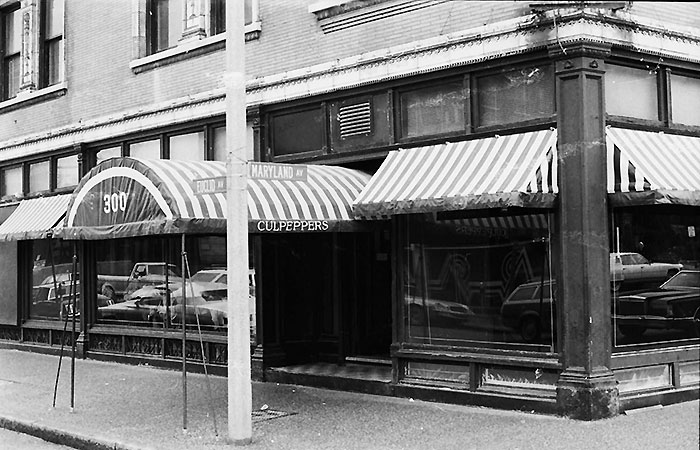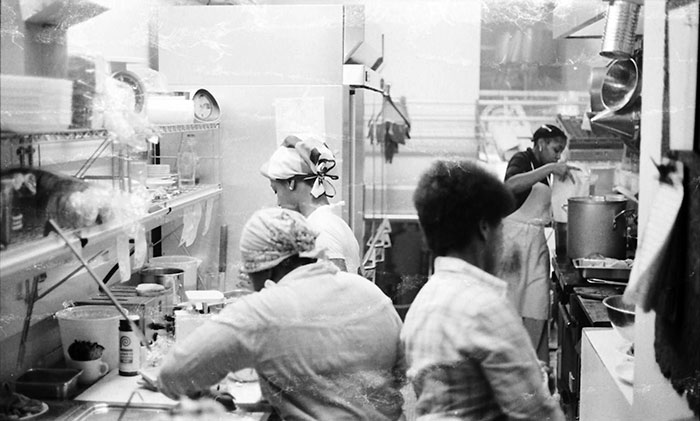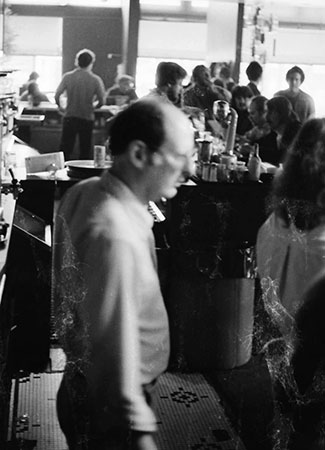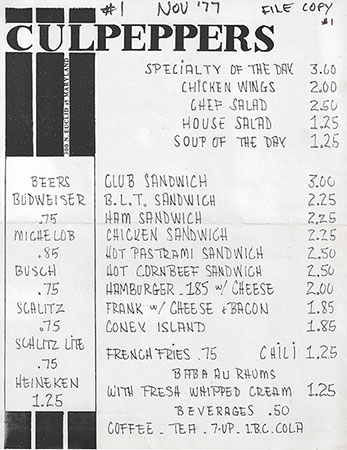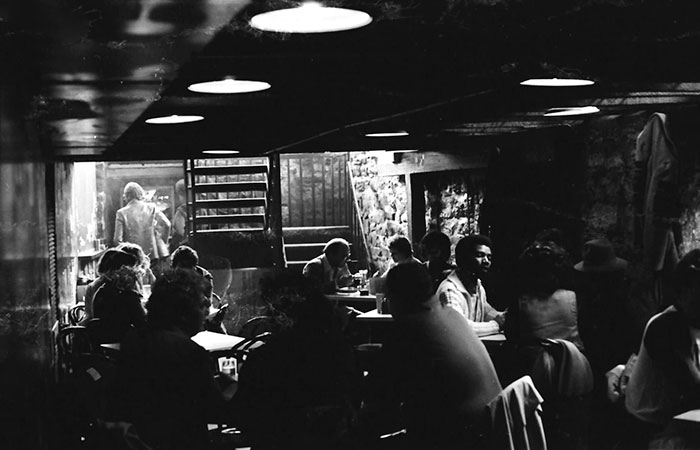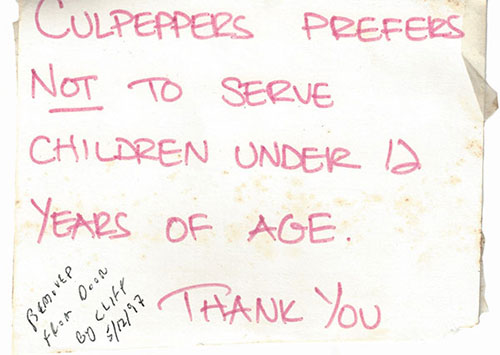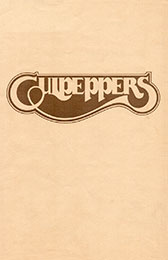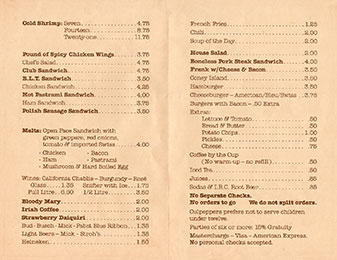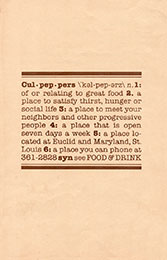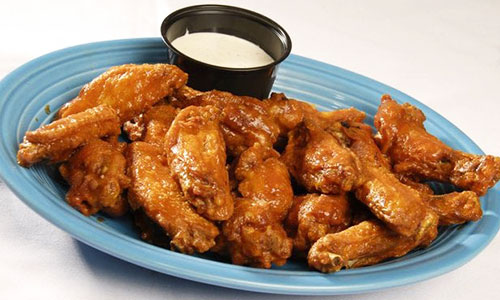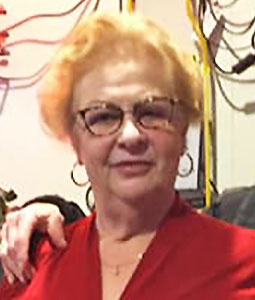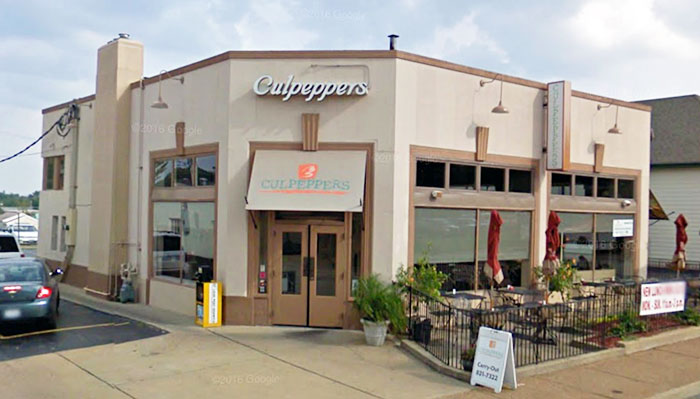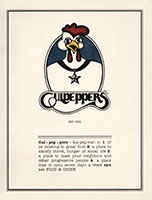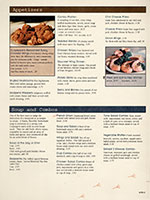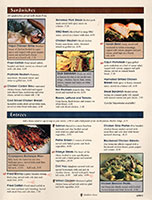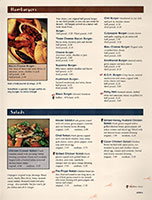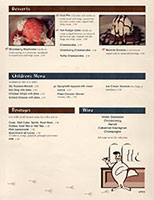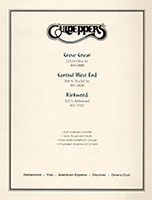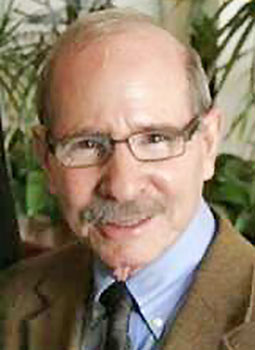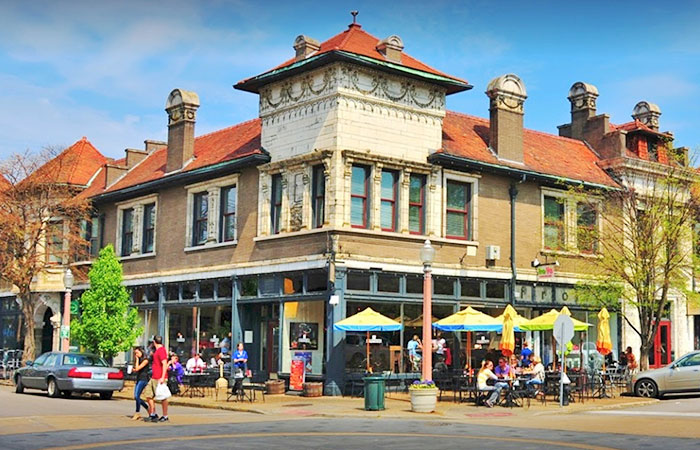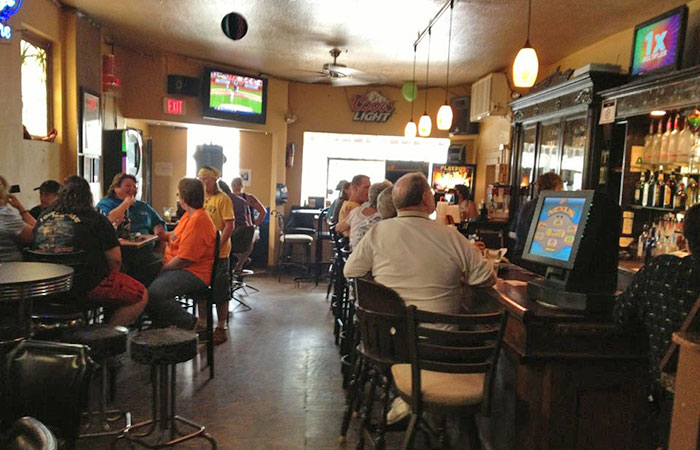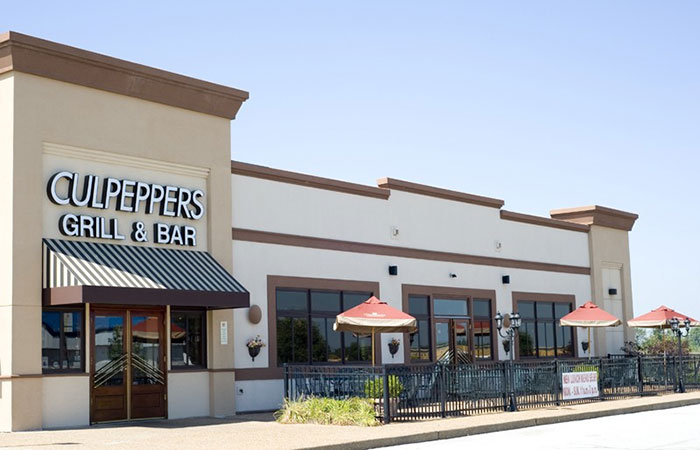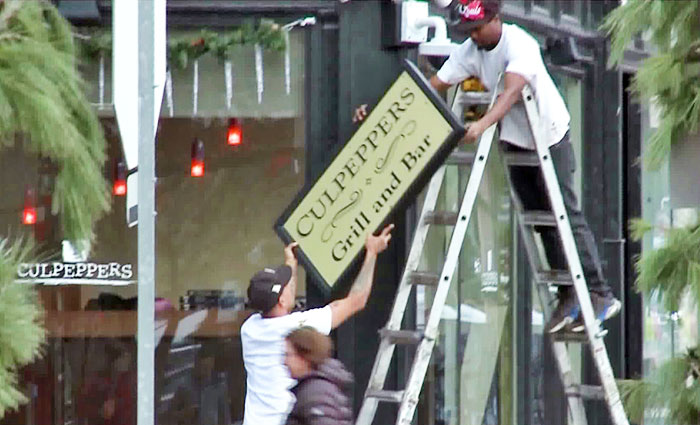|
Culpeppers Alexander Robinson McVoy was born in Jefferson City, Missouri on September 7, 1908. He was the son of James Alexander McVoy and Atwood Robinson. His maternal grandfather, Waltour M. Robinson, had been Chief Justice of the Missouri Supreme Court. The McVoy family moved to St. Louis in December of 1910. Foy Culpepper Waldron was born in Dallas, Texas on January 3, 1909. He was the son of Roman Simeon Waldron and Elizabeth Foy Culpepper. By 1912, the Waldron family had moved to St. Louis and Roman Waldron was vice-president of The Art Publication Society. Alexander McVoy and Foy Waldron were both enrolled in the Saint Louis Country Day School. It's there they met Charles Claggett, John Curby and Clifton McMillan. The five boys participated in sports, the drama program and yearbook activities. After graduating Country Day in 1927, McVoy, Waldron, Claggett and Curby all went to Princeton University, while McMillan went to Washington and Lee. The Princeton quartet stayed close during their four years in New Jersey. In 1930, when "The Tiger Smiles" was produced by Princeton's Triangle Club, Claggett handled publicity, Waldron was costumes manager and Curby was in the chorus.
After graduating college in 1931, the five Country Day alums returned to St. Louis. Claggett joined the Gardner advertising agency as a copywriter; in 1933, he was made radio director for the agency. McMillan also went into advertising, joining the D’Arcy agency. Curby was accepted into the Washington University School of Law. Waldron spent time on the squash courts and at debutante parties. At some point, he began working for his brother-in-law at the Hill-Hentschel Ink Company. McVoy worked for his father, who was president of the Central States Insurance Company. In 1933, when his father yielded control of the company following a disagreement with the State Superintendent of Insurance, Alexander McVoy yielded his job too. * * * * * In 1934, Alexander Robinson McVoy and Foy Culpepper Waldron went into the packaged liquor business. Using their middle names — their mothers' maiden names — they established Robinson Culpepper, Inc., a Missouri corporation dealing in "liquor, food and commodities." The two nascent liquor mavens enlisted their Country Day classmates to join their new venture. The 1935 St. Louis City Directory listed McVoy as president of Robinson Culpepper, Inc., Charles Claggett as vice president and Clifton McMillan as secretary-treasurer. In January of 1934, the company opened a liquor store at 351 East Broadway in East St. Louis. The following month, Robinson Culpepper, Inc. opened a St. Louis store in the Central West End at 4908 Maryland Avenue, just west of Euclid.
The Central West End store did well. The March 3, 1935 St. Louis Post-Dispatch announced its move to larger quarters.
The new space sold more than just packaged liquor — Robinson Culpepper, Inc. also sold liquor by the glass. An April 12, 1935 St. Louis Globe-Democrat ad touted the new location as "St. Louis' smartest West End cocktail bar." In the fall of 1935, "St. Louis' smartest West End cocktail bar" was temporarily closed by the excise commissioner.
Robinson Culpepper's 4665 Maryland address would change to 300 North Euclid when its main entrance moved around the corner from the Maryland side of the building to North Euclid. * * * * * By November of 1936, Alexander McVoy had relocated to Richer, Oklahoma. He would eventually become vice president of Texas Industries, based in Dallas. McCoy's departure led to a reshuffling of Robinson Culpepper's leadership. The 1936 St. Louis City Directory listed John Curby as president, McMillan as vice president and Claggett as secretary-treasurer. By 1937, the Country Day alums had all moved on from the liquor business. Charles Claggett went on to become president of Gardner Advertising. John Curby would become a widely known St. Louis attorney. After dabbling in advertising, Clifton McMillan became president of the Busy Bee Candy Company. In April of 1941, he was mixing himself a drink and mistook a bottle of weed killer for sparkling water. The 34-year-old McMillan died later that evening from the accidental poisoning. In June of 1936, Foy Waldron was on a sales trip for his brother-in-law's ink company. He was injured near Frankfort, Kentucky when he swerved his automobile to avoid striking a dog. The 30-year-old Waldron fractured his skull and would die in a Louisville hospital several weeks later. Robinson Culpepper, Inc. would be sold to Isadore Emas in 1937, and the company sold again a number of times after that. But despite the various changes in ownership, Foy Culpepper Waldron's middle name would live on.
When Isadore Emas died on September 11, 2004, his obituary contained the customary listing of relatives, past and present, as well as visitation and funeral arrangements. It also stated that in 1935 Emas had founded Culpeppers Restaurant in St. Louis. Isadore James Emas was born in St. Louis on July 4, 1913. He had seven siblings, two older and five younger. Emas barely made it out of his teens. In October of 1927, at the age of 14, his friend accidentally shot him in the eye with a pistol while the two boys were preparing to go rabbit hunting. Emas was hospitalized, but survived the injury. In 1930, Isadore Emas was an errand boy for a machine supply store. He lived with his parents and siblings at 1152 Bayard Avenue. Both the 1933 and 1935 St. Louis City Directories list Emas working as a clerk and living at 1202 North Euclid. Eli Emas, the erstwhile underage bartender and waiter who worked for Robinson Culpepper, Inc. in October of 1935, was the younger brother of Isadore Emas. The only suggestion that Isadore was associated with the cocktail bar in 1935, aside from his obituary, is in a rambling July 2, 1971 St. Louis Globe-Democrat article by gossip columnist Bob Goddard.
Despite the assertions in Goddard's article, there's no evidence that Isadore Emas was involved with Foy Waldron and his Country Day friends prior to the 1937 date when Emas purchased Robinson Culpepper, Inc. from "Waldron et al" and changed the name of the company to Culpepper, Inc. The 1937 St. Louis City Directory documents this transition, listing Isadore J. Emas as president of Culpepper, Inc., David Emas (Isadore's older brother) as vice president and Ernest Muench as secretary-treasurer. (The 1936 Directory had Curby, McMillan and Claggett in those positions.) By 1940, Eli Emas had replaced Muench as secretary-treasurer, and by 1942, Alberta Emas (Isadore's wife) had ascended to the secretary-treasurer position. And in 1944, Isadore Emas sold his company to Paul Karhanek.
Paul John Karhanek was born in St. Louis on December 21, 1911. As a young man, he was an accomplished drummer, playing in clubs around St. Louis. When drumming didn't pay the bills, he went into the liquor business. In 1940, at the age of 28, he was living with his parents and working as a salesman for the Woodford Distilling Company. Karhanek married Patricia Alice Peake on May 22, 1941; their divorce was finalized in December of 1943. The following year, Karhanek bought Isadore Emas' cocktail lounge at Euclid and Maryland, registering it as "Culpepper's" with the state of Missouri on May 13, 1944. According to Karhanek's daughter, Carol Karhanek Vaughn, her father bought Culpepper's hoping to combine his knowledge of the liquor business with his club experience.
Karhanek had publicity photos taken not long after he purchased Culpepper's. While the photos would appear to be staged, they show glimpses of the interior of the cocktail lounge in the mid to late 1940s.
In August of 1947, Karhanek met Jeanne Shirley, who was performing at the Park Plaza Hotel.
The Chicago girl quickly became a St. Louis girl, as reported by Bob Goddard in his August 24, 1947 Globe-Democrat column.
In 1954, Karhanek added pizza to his menu. He advertised Culpepper's as both a pizzeria and a cocktail lounge. In his June 9, 1955 Globe-Democrat column, Bob Goddard quipped:
Culpepper's became the place to go for pizza. In his July 2, 1971 column, Goddard reminisced that:
Carol Karhanek Vaughn remembered her father expanding Culpepper's menu beyond pizza.
On the night of August 7, 1960, a fire of undetermined origin swept through Culpepper's, causing extensive damage. Karhanek rebuilt his restaurant and it was back in business two months later, although there was no longer customer seating in the basement. Paul Karhanek sold Culpepper's in 1967. According to Carol Karhanek Vaugn, there were multiple reasons.
Charlie Wells, another drummer who had owned the Tiger's Den in Gaslight Square in the 1960s, took over Culpepper's after Paul Karhanek bowed out. But the Central West End was going through a shaky period and business was slim to nonexistent after dark. Wells sold Culpepper's to Ray Griffith, who didn't do much better. Griffith closed the restaurant on June 30, 1971, "with plans to reopen under the Culpepper banner somewhere out in the county in a couple of months." Griffith's county Culpepper's never materialized. The building on the northeast corner of Euclid and Maryland took a pause from the restaurant business and became Warfield Shops, Inc., specializing in antiques. By August of 1976, the space was again an eatery, as Lynn Smith, who owned the City Cousin, opened Ginger's, offering salads and light sandwiches. Ginger's lasted for about a month. * * * * * Louis Herbert Glazier was born in St. Louis on August 3, 1928. For most of his life he went by the name Herb — never Louis. Glazier grew up in University City. His father was a pharmacist. After graduating from University City High School in 1946, he briefly attended the University of Missouri, where he said he "majored in pool." Glazier was drafted into the Army and sent to Korea. Back in St. Louis, he graduated from the St. Louis College of Pharmacy and briefly worked as a pharmacist at the Venture Stores. Glazier wasn't happy in his father's profession and set his sights on the saloon business. In 1958, Glazier purchased a half interest in the Golden Eagle Saloon in Gaslight Square. He subsequently opened the adjacent Opera House, and ran both establishments until the mid-1960s.
In September of 1974, Herb Glazier partnered with Herb Balaban Carp to buy The Castlewood Bar at 4747 McPherson. It was at the Castlewood that Glazier met Mary McCabe, who was waitressing there. The two would live and work together for 15 years, before marrying in 1990. In November of 1974, the two Herbs opened Herbies' in the Woman's Exchange space at the northwest corner of Euclid and Maryland. According to Adalaide Cash Balaban, the other Herb's wife, Herbies' was not a good fit for Glazier.
Glazier left Herbies' and opened a more "pub-like" restaurant across the street. In November of 1977, he and Mary McCabe resurrected Culpeppers in its former space — dropping the apostrophe.
When Culpeppers reopened, it was no longer a pizzeria; it was a bar with food. But its food was several notches above what traditionally came from bar kitchens. Much of the credit went to McCabe. She created the recipes and trained the cooks, who worked wonders in extremely cramped quarters.
Culpeppers' original menu featured a dozen or so items — wings, salads, a soup of the day, sandwiches. The early menus were hand-written by Glazier, including menu #1 on opening day.
Culpeppers' bar did a booming business, helmed for years by bartender manager Jack Rinaldi. Glazier sold beer only in cans. He determined he could fit more cans in his cooler and they would stay colder than bottles. He never ran out of ice. He wouldn’t stock swizzle sticks. He said they clogged up the vacuum cleaners. When patrons asked for them, he told them to use their spoons.
Culpeppers was an "adults only" restaurant, or at least Glazier tried to make it so. He called his establishment "an adult drinking atmosphere" and said he didn't want children dropping sugar packets all over the table tops and floors. He posted a hand-written sign on the door to that effect, which remained in place for 20 years.
Glazier and McCabe expanded Culpeppers' menu into the 1980s, although it still remained relatively small. St. Louis Post-Dispatch restaurant critic, Joe Pollack, described his favorite soups and sandwiches in a June 25, 1981 review.
In addition to listing food and drink options, the simple printed menu also codified Glazier's "rules" — no coffee warm-ups or refills, no separate checks, no orders to go, no split orders, no children under twelve, no personal checks.
While customers flocked to Culpeppers for its soups and sandwiches, the restaurant's signature dish was its spicy chicken wings. They were on Glazier and McCabe's menu from day one and became synonymous with the Central West End restaurant. According to Joe Pollack's March 31, 1983 Post-Dispatch article, chicken wings may have been introduced to St. Louis in 1975 at Jackie's Place on Clayton Road. Marty Powers borrowed the recipe when he opened his restaurant in Clayton later that same year. Herb Glazier said he got the idea from Powers, although he made a few changes to the sauce recipe.
Glazier's sauce recipe was simply Frank's Hot Sauce and butter, although countless other concoctions were conjured up over the years by those wanting to duplicate the tangy sauce. Culpeppers sold its chicken wings by the pound — 1,500 pounds were sold each week. The wings were cooked-to-order, tossed with the sauce in stainless steel bowls and served in china bowls. Paired with Culpeppers' iceberg house salad and a cold can of beer, the combination was one of the most popular in town.
In 1988, Herb Glazier and Mary McCabe sold Culpeppers to an investment group headed by Norm Leve and retired from the restaurant business.
In 1987, Norm Leve was a 47-year-old real estate executive. He was also a regular customer at Culpeppers.
Leve and his group formed a Missouri corporation called the Monday Club, named after their weekly lunch dates. On March 1, 1988, the Monday Club took over ownership of Culpeppers.
In his October 3, 1988 Post-Dispatch review, Joe Pollack mentioned a few additional changes, but agreed that things had stayed pretty much the same.
While Leve loved Culpeppers' chicken wings and salads, he and his partners purchased the restaurant as an investment.
The Creve Coeur location in Westgate Centre opened in 1989. Culpeppers Kirkwood opened in 1994. With the new restaurants came expanded menus. The Creve Coeur and Kirkwood locations offered a fried chicken special on Sunday nights. High chairs appeared, along with a children's menu for kids twelve and under.
The Monday Club members all had "day jobs" — they were not restaurateurs. Initially, they hired Arnie Freed to manage their Central West End restaurant. As their enterprise grew, they replaced Freed with Chris Olsen who had had extensive experience opening and managing multiple restaurants.
In addition to their initial investment in the Central West End, The Monday Club would open eight more Culpeppers restaurants — Creve Coeur (1989), Kirkwood (1994), St. Charles (1999), Florissant (2000), Bridgeton (2001), Arnold (2001), O'Fallon (2004) and Wentzville (2009). Leve remembered his partners meeting with Olsen every Monday.
Good investors have an exit strategy. Leve and his group started closing restaurants in 2010.
Chris Olsen took over the Culpeppers franchise in May of 2015.
On December 4, 2019, Olsen shuttered the Central West End restaurant to make way for an expansion of the St. Louis Chess Club.
On February 6, 2024, Olsen posted a notice on Culpeppers' Facebook page stating, "After 25 years, Culpeppers St. Charles has closed its doors."
The venture started by five Country Day friends in 1934 had come to an end.
Copyright © 2024
LostTables.com |
|||||||||||||||||||||||||||||||||||||||||||||||||||||||||||||||||||||||||||||||||||||||||||

